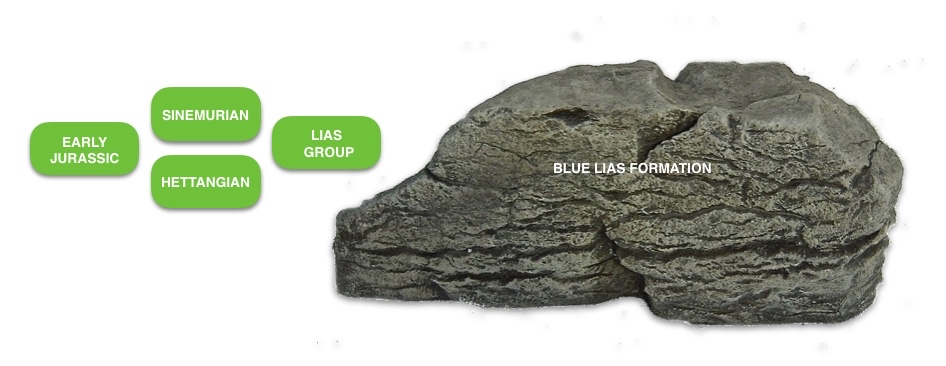This location is similar to Quantoxhead. Kilve is another location for collecting ammonites and reptile remains. However, vertebras are as common here as ammonites. It is also set in tranquil surroundings and is ideal for all the family to enjoy.
DIRECTIONS
♦ Kilve is just found after Quantoxhead. Follow the A39 to Kilve and find Sea Lane. Follow this down to the beach, where parking is available at the end of the road.
♦ From here, walk east. Note that, as you leave the car park, there are two routes, one which passes the toilets on the left and the other is a lane to the right. The lane to the right is much quicker and leads directly onto the beach. The left path is much longer.
♦ Ref: 51.19359°N, 3.22495°W
PROFILE INFO
FIND FREQUENCY: ♦♦♦ – You will see many flat ammonites at Kilve. As this is a site of special scientific interest (SSSI), these are protected by SSSI rules. In particular, the ammonites are so fragile that collectors can ruin them for everyone else to see on the foreshore. Reptile remains can also be found and are not uncommon.
CHILDREN: ♦♦♦ – Kilve is suitable for families, especially children who will be fascinated by the ammonites exposed on the foreshore. However, Kilve can be dangerous. Always check tide times and keep children well away from the cliffs.
ACCESS: ♦♦♦ – Access to the beach at Kilve is fairly easy with the use a map.
TYPE: – Kilve is a foreshore location. Fossils are found exposed on the foreshore, within the rocks and exposed in wave-cut platforms.
FOSSIL HUNTING
Bones of ichthyosaurs and plesiosaurs are the most common reptiles, but other reptiles have been recorded at this location. Fish remains can also be found. In addition, there are many different species of ammonite at Kilve, the most common being Psiloceras planorbis, which is found as a flat ammonite exposed on the foreshore. Ammonites can also often be found in the shale. It is best to try to find nodules with ammonites in, as the shale ammonites are flattened and are often not in very good condition. They will also break if you try to extract them.
Bones can also be found in hard nodules scattered around on the foreshore. In this respect, Kilve is similar to Quantoxhead and, in fact, walking west from Quantoxhead will eventually lead to the beach at Kilve.
GEOLOGY
Over 12m of limestone and shales from the Lower Lias is exposed at Kilve. These contain Psiloceras planorbis succeeded by a thick sequence of shales with a few thin limestones. Above this are about 18m of shales in which limestones become more numerous and more massive upwards from the bucklandi zone. The Lias dips eastwards and continues to Quantoxhead. Within these dark shales, occasional limestones appear containing Coroniceras.


SAFETY
Common sense when collecting at all locations should be used and knowledge of tide times is essential. You can easily be cut off at Kilve by the tide as the sea always reaches parts of the cliff.
EQUIPMENT
Kilve has strict SSSI restrictions. Hammering and collecting is not allowed. Therefore, we recommend that you take a camera to photograph any ammonites exposed in the shale. The no-collecting rule is aimed at preserving the beautiful flat and fragile ammonites exposed in the shale, which would otherwise be smashed by collectors. However, reptile remains and other fossils can still be collected at this site.
ACCESS RIGHTS
This site is an SSSI. This means you can visit the site, but hammering the bedrock is not permitted. For full information about the reasons for the status of the site and restrictions please download the PDF from Natural England – SSSI Information
It is important to follow our ‘Code of Conduct’ when collecting fossils or visiting any site. Please also read our ‘Terms and Conditions‘
LINKS
♦ Buy Fossils, Crystals, Tools
♦ Location Discussions
♦ Deposits Magazine
♦ Join Fossil Hunts
♦ UK Fossils Network





























